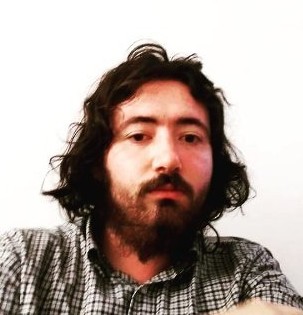




They say that lightning never strikes twice. Well, that’s nonsense, because lightning follows no one’s logic other than its own. The same can be said about movies which follow a logic of its own choosing, and much of the energy that went into piecing the first entry together can fuel the follow up. There have been times when the sequel has upended the power of the original, by curating a work that stands on its own two feet.
But due to their nature as follow-ups, they’ll rarely find themselves listed on a reputable selection of “Greatest Films of All Time” list. Although commonly regarded to be the most assured work of the trilogy, The Godfather Part II has been forced to follow in the shadow of its predecessor (even when it makes it into a worthwhile publication, it follows its older sibling, despite being the more nuanced and more ambitious work.)
This list dis edicated to championing the younger, mightier siblings that Hollywood has often overlooked. But that’s not to say that the first films were unworthy of a viewer’s attention, just that the follow up were better. Play it again, Sam! (As a postscript, if anyone’s reading, and is considering a sequel to Casablanca, for heavens sake don’t!)
…
.
1. A Shot In The Dark (Blake Edwards, 1964):
How does a bumbling supporting character become the face of a bona fide franchise? You hire Peter Sellers, chameleon performer and master of disguise, to flesh out the part of Inspector Clouseau, therefore legitimising his desire to lead a sequel all by himself. Even more remarkably, director Blake Edwards was able to transform a plodding French play into a farce extraordinaire, by way of a biting script, that allowed Sellers to unleash the signature drawl that spawned a legion of imitators in his wake. No Shot In The Dark, no Allo Allo.
Sellers is the star player, but Edwards was able to pull out one more formidable performance from one of his ensemble. In Herbert Lom, Edwards created Charles Dreyfus, the Pink Panther’s second signature player, bringing to life one of comedy’s most nefarious foils. Like Sellers, Lom was a constant feature in the franchise, although by the time they filmed The Pink Panther Strikes Again, Dreyfus had become something of a throwaway pantomime villain. There’s none of that in A Shot In The Dark.
.
2. The Godfather Part II (Francis Ford Coppola, 1974):
Francis Ford Coppola found himself in a bit of a pickle. Having steered Marlon Brando and Al Pacino through a particularly difficult shoot, Coppola left The Godfather feeling like he’d much rather let anyone else direct the sequel. Ultimately, when he was offered carte blanche, creative freedom over script and edit, and direct a script that hopped from the 1900s to the early 1960s, he relented and directed the film that arguably stands as his most refined and accomplished work. (We’ll avoid the obvious “The studio made him an offer he couldn’t refuse” line.)
He lacked Brando, but in Robert DeNiro, Coppola had a more than worthy successor, who performed his lines almost entirely in Italian. He deservedly won an Academy Award for his efforts, although it is a mystery why John Cazale – his hair parting under the nervous energy of his portrayal – went unnoticed by the judges.
.
3. Dawn of The Dead (George A.Romero, 1978):
Promoting his second zombie movie, director George A.Romero took the time out of his busy schedule to speak to Roger Ebert. The critic was curious about the director’s evolution, considering that Dawn Of The Dead was crisp, bright and kaleidoscopic and Night of The Living Dead was grimy, feverish and lit from head to toe in black and white silhouettes. “Both times, the look of the movie was a conscious decision,” Romero replied. “At the time we did Night,’ I was a director of television commercials. Some of them cost a lot more than our whole movie. They were very slick, sophisticated . . . we wanted the opposite look for ‘Night.’ We wanted it to look like a newsreel. With ‘Dawn,’ I wanted the slick took, I wanted to bring out the nature of the shopping centre, the retail displays, the mannequins.”
Dawn of The Dead is generally considered to be Romero’s strongest work. The film was also his most influential, spawning a legion of imitations and a remake that’s much better than it had any right to be. The focus found in Dawn is in its humanity, of which there is a great deal to find, no matter the brain munching or the carnage that divulges across the screen. Though it lacks some of the emotional resonance of the first entry, Romero’s penchant for visceral, virulent set pieces, razor-sharp dialogue and lingering claustrophobia means that its status as zombie movie supreme is not only assured, but deserved.
.
4. Return To Oz (Walter Murch, 1985):
All right, The Wizard of Oz is a classic, combining all the sugary proclivities that makes up a Christmas delight, even if the underlying message (“be grateful for what you have, because it can easily disappear,”) was done much better in It’s A Wonderful Life. It takes a brave director to jump from Christmas to macabre, but that’s exactly what Walter Murch accomplished on Return To Oz, without being as unbearably smug about his accomplishments a la Tim Burton. Incidentally, Murch broke a record for longest gaps between entries.
Indeed, the film is much more faithful to the tone of the L. Frank Baum novels, curating a fable that’s more adult, albeit more sophisticated, to the aphorism of the 1939 original. Mercifully, there are fewer songs, but Fairuza Balk inhabits the role of Dorothy with as much gusto as Judy Garland did. Nicol Williamson, meanwhile, enjoys his supporting role as a scenery-chewing baddie, and weirdly Jean Marsh suits the grotesque make-up that’s applied on her.
.
5. The Colour of Money (Martin Scorsese, 1986):
Although he portrayed many rogues during his life, none cloaked themselves to Paul Newman as ‘Fast’ Eddie did. Picking up from the character twenty five years after The Hustler left off, Newman now found himself in the role of mentor, offering a newer, more mature perspective to the pool player. In his place stood Tom Cruise’s Vincent as the young buck trying to make a name for himself in the world of sports. As it happens, Cruise would follow in Newman’s footsteps in a sequel where he acted as counsel and confidant to the next generation (more on that later!)
Martin Scorsese directed the film, but if there’s a hero, it’s Newman, who reveres his younger performance, without shackling himself to every beat he laid down. Newman won an Oscar for The Colour of Money, and deservedly so, because it’s rich with pathos, passion and forgiveness. Then there’s a matter of Eric Clapton, who lets his guitar soar through ‘It’s In The Way That You Use It’, a tidy blues number that features one of his more dynamic guitar solos.
.
6. Manon Des Sources (Claude Berri, 1986):
The success of the story can be summed up in two words: Emmanuelle Béart. She’s sensual, she’s wild spirited and as ruthless as the grandfather who has involuntarily disowned her. The interplay between Béart and Daniel Auteuil – reprising his role as the artless Ugolin – is the principal reason to watch the drama, but that shouldn’t discount Yves Montand who has to play an elderly man forced to reconcile with his past misgivings. Montand was growing old, and although Manon wasn’t his final performance, there’s definitely something doleful about his closing moment, tossing his hand out to a God he hopes will absolve him. One wonders whether Martin Scorsese watched the film before completing his equally liturgical work, The Irishman.
Bringing in intellectual, politically-motivated director Claude Berri to oversee the film, then best known for the probing polemical-drama Tchao Pantin, was a move that paid off dividends because the film doubles as a commentary on class relations. The poor must starve while the rich flourish, but everyone depends on the water that flows into the local well. Béart brings a sense of urgency to the film, armouring her character with an undercurrent of bravura that aids her through her darker and more contemplative moments. The film is a darker and arguably more intense affair to the more jovial Jean de Florette, but they make for good companion pieces, marking French society with the fervour Francis Ford Coppola brought to The Godfather films. Thankfully, Berri didn’t direct a third chapter!
.
7. Flirting (John Duigan, 1991):
fter the whimsical The Year My Voice Broke, director John Duigan returned to more serious, adult territories with a script that was largely written before the first entry: Flirting. While the film was more sophisticated, it nevertheless carried on with Danny Embling’s arc. Beneath the anxious glances and itchy expressions lies an impish, boyish character, played with tremendous confidence by Noah Taylor. And Duigan doesn’t shy away from the sexual politics — Nicole Kidman trails around in lingerie, Naomi Watts flits around the characters imagination and Thandiwe Newton luxuriates in the role of sylphlike siren.
If Flirting doesn’t have the thematic pull of Duigan’s more polemical work, it is nevertheless an impressive overview of the fragile male psyche during adolescence. The character seemed to physically fit me,” Taylor recalled. “There was a lot that I related to in the script. The character prompted me to think about life in a different way. Danny was probably a more likeable person than I saw myself as being at the time, and he had a better outlook on life. I really tried to inhabit the role and the story. We were all at the age where imagination was still a big part of our lives.”
.
8. Hot Fuzz (Edgar Wright, 2007):
Nearly three years after taking the world by storm with zom-rom-com Shaun of The Dead, stars Simon Pegg and Nick Frost opted to reunite for a follow up that set out to anglify another genre that was stereotypically bravura driven and American: action.
So, it’s real coup du cinema for Pegg and Frost to hire two-time James Bond actor Timothy Dalton to play the film’s baddie, a nefarious businessman who sets out to rid his village of any unwanted competition. Much to Pegg’s delight, Dalton described the filming of Hot Fuzz as a favourable one, stating he’d had more fun playing foe than secret agent.
“They’re both brilliant, they’re fabulous”, Dalton recalled. “And Edgar [Wright] who directed it and wrote it with Simon is just a unique talent. And it’s about that cop. He’s brilliant, dedicated,committed… he’s so good they want to get rid of him. They ship him off to a quiet, sleepy, little rural village where there’s no crime. But there’s a reason why… so the movie develops into a mystery/thriller that is funny, very funny, and really rather wonderful and unique.”
.
9. Blade Runner 2049 (Denis Villeneuve, 2017):
The cliché about science fiction cinema is that they do not earmark themselves for repeated viewing, but Blade Runner exploded that particular indignity, largely because it was packaged and re-released in a variety of different formats throughout the years. Director Ridley Scott was eager to produce a sequel, although by 2014, he bowed out of the project, only serving to guide replacement Denis Villeneuve through the process. Inspired by the tone of the previous entry, Villeneuve created an impasto that was thicker on feeling than form, creating a blockbuster that was pencilled as “the most expensive art-house movie”. Blade Runner 2049 was an extraordinary work: Rarely had a film treated its audience with such reverence and disdain at the same time, much less a popcorn film, but Villeneuve and star Ryan Gosling dared audiences to sink into the pond of uncertainty, where they would either drown or swim.
Which wasn’t to say that the film didn’t have it’s moments of fanservice. Harrison Ford’s introduction into the sequel is filmed with the anticipation it deserved, shadowing the former bounty hunter with a series of regalia and impressive prop displays. Not much of the film is left to the audience’s imagination, but the photography – crisp and beautifully lit in kaleidoscopic palettes – capture the eye of the viewer, leading them further into the tunnel of revelation and despair. The result is glorious.
Blade Runner 2049 is the film pictured at the top oif this article.
.
10. Top Gun: Maverick (Joseph Kosinski, 2022):
Don’t let the opening moments or the bravura-tinted posters fool you: Top Gun: Maverick is a deeply sophisticated venture, querying the value of memories in the density of an impossible mission. No, it’s not perfect, but it’s a damn sight better than the original, which was all pecks and volleyballs, by way of a mullet and a Kelly McGillis or two. What we get here is a film that’s impressive on both an aesthetic and atmospheric level, hurling viewers into the action, with flawless directorial command.
It’s a visceral, occasionally violent, ride, but that’s not to say the finished result is a doom feature, because it boasts a side performance from Miles Teller, who brings a tortured psychological counterpoint to Tom Cruise’s breezier lead. Furthering the drama, Val Kilmer pops around to bring new life to Iceman, and his cameo – mindfully written around Kilmer’s real life battle with cancer – has genuine poignancy.











